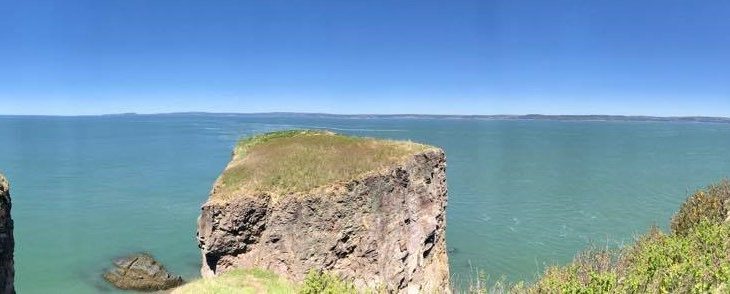In a recent book chapter in Policy Work in Canada: Professional Practices and Analytical Capacities Bryan Evans and Adam Wellstead explored the working relationship of non-governmental organizations (NGOs) and government staff in a policy- and decision-making context (Evans & Wellstead, 2017). In my experience as vice-chair of the Bay of Fundy Ecosystem Partnership (BoFEP), this chapter sheds some light on the nature of the working relationships BoFEP enjoys with government departments responsible for the conservation and protection of the Bay of Fundy.
BoFEP advocates for scientifically sound decision-making, open and transparent decision-making processes, and engagement of stakeholders in decision-making. In order to accomplish its goals, BoFEP involves governmental and intergovernmental organizations (for example, the Department of Fisheries and Oceans Canada or the Gulf of Maine Council on the Marine Environment) as well as other NGO groups (e.g., Eastern Charlotte Waterways, the International Ocean Institute-IOI Canada, the New Brunswick Aboriginal Peoples Council, and WWF-Canada), and academic institutions (e.g., EIUI is the “Informatics Working Group” of BoFEP).
As a major finding, Evans and Wellstead concluded that government and NGO staff engage in policy work differently. Generally speaking, government personnel are more likely to be involved in briefing ministers, suggesting or implementing policy options, and negotiating with project staff. NGO employees, on the other hand, are more likely to be engaged in work with stakeholders, identifying policy issues, or evaluating policy outcomes (p. 253). From BoFEP’s perspective, bringing different actors and stakeholders together to share information about issues relevant to the Bay of Fundy is a major role. Conferences, workshops, and projects centered on the involvement of stakeholders are integral in BoFEP’s activities, and including government departments in these events is part of BoFEP’s identity as a “bridging organization.” Government staff are invited to participate in planning and organizing these events, give conference presentations, and be part of BoFEP’s managing committees.
Evans and Wellstead discussed the relationship between the two “sides” of policy work. Their findings suggest that “NGO respondents may see their participation as an afterthought [rather] than [as] real players in decision-making.” While this scenario may also be characteristic of BoFEP – at the end of the day, government officials are included in operational and strategic decisions – BoFEP enjoys a close working relationship with governments through active participation of government staff members in the Steering Committee, their work on particular projects, and their suggestions for possible new project areas. This working relationship with government staff helps to align BoFEP’s priorities with those of the government and sets a precedent for collaborative and constructive relationships between governments and NGOs.
The role of NGOs in decision-making processes is currently being explored in a EIUI project and EIUI will continue to consider this subject in future studies. A review of BoFEP’s activities in communication and stakeholder involvement with respect to government policy- and decision-making provides an example of the type of a role an NGO can play. Evans and Wellstead emphasized the importance of NGO work in the policy-making realm. “In addition to working more regularly on issues that stem form public concern, government respondents were more likely to agree that their work has become more politicized and is under greater scrutiny from outside influences” (p. 261). “This may well speak to the need for more formal and institutionalized spaces to allow better dialogue between both sides of each policy community to better deliberate with one another…” (p. 263). BoFEP already is a model of collaboration and dialogue between NGOs and government staff. Functioning as a “hub” or “bridging organization” between the two sides is perhaps a model that could be replicated in other contexts to further improve constructive conversations around public policy and conservation.
Reference
Evans, B., & Wellstead, A. (2017). Policy dialogue and engagement between non-government organizations and government: A survey of processes and instruments of Canadian policy workers. In M. Howlett, A. Wellstead, & J. Craft (Eds.). Policy work in Canada: Professional practices and analytical capacities (pp. 241-264). Toronto: University of Toronto Press.
Author: Sarah Chamberlain

